Analysing an episode of a TV Drama: Misfits
Narrative Structure-Character Representation-Character Roles
Misfits is a British comedy/science fiction drama show, following the results of a freak storm in which five youngsters, working in a community service program after commiting various crimes, are struck by lightning and begin to develop strange powers. These powers appear to be caricatures of each individual's personalities:
Curtis- Curtis can turn back time during moments of regret and remorse. This reflects his grief and guilt over his past and his feeling of being burdened by this past.
All of the characters wear the same brigth orange jumpsuit. The denotations of this including the humiliation of the garish colour and the attempt to make them all look the same, some of the deeper connotations including the possibility of trying to seperate the youngsters from the rest of society, 'highlighting' their difference to it. Each character, however, wears the jumpsuit differently, carrying across their various personalitiies. Curtis wears his with the arms tied around his waist, and he wears sports trainers (ex-sports star) with it. He often leans or sits sprawlingly, his body language carrying an air of relaxation, also extended by his slouchy clothing.
He conforms to the stereotype of a young, black male: not only is he athletic, but he is/was a professional runner, a sport often assossiated with black people.
Despite his casual attitude, Curtis carries an air of arrogance, and that he is above the others, often commenting how he doesn't belong there, or "shouldn't be there", added to by his clear, middle class voice. He is also shown to be thoughtful of women, possibly due to what we can assume was a rich and easy upbringing. When not in his jumpsuit, he wears a sporty tracksuit, clear illustrating his desire to be a sportsman once again.
Overall, the portrayal of Curtis is fairly nuetral, most camera shots being straight on mid level shots, although some high angle is used, but only when it is used on the other protagonists together. The only notable use of camera shots is after he has turned back time: we get to see the same scene beginning again, but from a new perspective, as Curtis now sees it, now using a slight low angle looking up at him now, in light of his new knowledge.
Kelly- Kelly develops the use of telepathy, connected to her insecurites and fears of other peoples's perception of her.
She wears her jumpsuit with copious amounts of goldon jewellery inlcuding a pair of large hoop earrings, heavy make-up, tightly scraped back hair and a pair of bright white trainers, conforming to the role of a common 'chav'. Throough this, she also adopts a fairly aggressive masculine stance, subverting her role as one of the female protagonists. This is most visible during the argument/figth that Kelly has with her boyfriend, in which she is portrayed as having all the power. Not only does she hit him, but there are also many low angle shots looking up at her, the binary opposite of the high angle shots of him. She also has a fairly typical 'chav' accent.
Kelly- Kelly develops the use of telepathy, connected to her insecurites and fears of other peoples's perception of her.
She wears her jumpsuit with copious amounts of goldon jewellery inlcuding a pair of large hoop earrings, heavy make-up, tightly scraped back hair and a pair of bright white trainers, conforming to the role of a common 'chav'. Throough this, she also adopts a fairly aggressive masculine stance, subverting her role as one of the female protagonists. This is most visible during the argument/figth that Kelly has with her boyfriend, in which she is portrayed as having all the power. Not only does she hit him, but there are also many low angle shots looking up at her, the binary opposite of the high angle shots of him. She also has a fairly typical 'chav' accent.
Simon- Simon gains the ability to turn invisible when feeling isolated. This is due to his constant feeling of being alone and ignored.
His jumpsuit is always entirely buttoned up straight, and his hair formally slicked down. His normal, everyday clothes are also very uniformed, the buttons always done up to the collar. As Simon is the outcast of the group, he neither conforms nor subverts the roles of either gender. His voice is very quiet and clear, and occasionally wavers when he speaks, clearly showing his fear and displacement within the group.
When Simon first becomes invisible, the audience can immediately sense the build up of tension. This is due to the music that begins in this scene and progresses with it. The long, drawn out and deep tones create this tension and fear and builds up as the scene becomes inter-cut with the growing aggression of the probation worker.
Alisha- As a wild, crude and flirtatious party girl, Alisha becomes able to create sexual arousal in anyone that she touches.
Alisha's jumpsuit is constantly buttoned low down to reveal a bright pink(feminine) bra. She accentuates her curves by adding a fashion belt around the waist, and also wears a fair amount of girly jewellery as well as lacing her trainers with bright pink laces. Her body language is of a fairly sexual nature, as she constantly throws her chest forwards and plays with her hair. Her casual clothes are also very girly as well as revealing. Alisha easily conforms to the stereotype of a modern day young female.
When she is telling the story of how she was committed to community service, is starts off with a simple straight on shot of her, paired with tilted shots of the boys, exaggerating their lack of interest. However, as the sexual tension of the room grows, it switches to low angle shots of her, and straight on close ups of the boy's shocked faces. This shows how she has all of the power in this situation, and that she is very aware of it, here subverting her otherwise submissive feminine role in which she is treated more as an object than a person.
Alisha also has a very laid back attitude, reflected in her speech. She uses lots of swear words and will make only a minor attempt at properly pronouncing words, making her seem unintelligent.
Nathan- Despite his overriding cockiness and loud nature, Nathan is seemingly the only one without a power.
With a non-chalant attitude and a sarcastic use of wit, Nathan appears uncaring about most things. His jumpsuit is always only half done up and covered in grime and he is often seen with a cigarette. He conforms to not only his stereotype as a male, objectifying women and often creating sexual innuendos, but also his role as a young Irish-man, his loud personality and sarcasm two largely contributing factors. His large use of bold gestures also adds to the feeling of a big personality.
However, when pleading with his mum, he is shown through the letter box, dehumanising him as a character. Also, when trying to find a place to stay, the montage is of him crossing a bridge-a very small bridge- showing that despite his big character, he has hardly any real friends, and those that he may consider friends are in fact very quick to turn him away. Despite this, Nathan remains the upbeat, comedy character of the bunch, especially shown via his use of over exaggerated facial expressions and of peculiar props (wheelchair etc.).
This band of five misfits creates the heroes of the story (despite their lack of conformity anit-heroic nature). As a band of young people, the producers are immediately drawing in the target audience of older teens/young adults, and the us of music is also very fitting of this audience, further helping them to identify with, and therefore watch, the program.
Despite their roles as the protagonists/heroes, they are still victimised in some parts, eg. when the probation officer reprimands them of their mobile phones, it uses high angle shots of them over the shoulder of their suppressor, and as he is in the foreground, he takes up a fairly large portion of the screen in comparison, showing his power in the situation. He is later represented as the 'villain', his personality having become cruel and sadistic after the storm.
The overall structure of the first episode is non linear due to the time travel, and fits fairly well with Todorov's theory of narrative equilibrium:
Equilibrium Into- Disruption Storm- Recognition of Disruption Discovery of Powers- Attempts to Repair Disruption Time Travel/Death of Probation Officer/Burial- New State of Equilibrium Aftermath
Some Binary Opposites are used in the show:
Predator and Prey are contrasted during the chase scene in which it cuts between the crazed probation worker (predator) and Kelly (prey. Also being cut with the scene of Alisha's story, highlighting the opposing tension of sexuality, not fear as the sound of Kelly and the man running are extracted, the sound of them breathing being reminiscent of sexual noises.
Most of the shots are generally standard shots, leaving the viewer as an individual to make up their own mind about the characters, however, high and low angle are also used most notably during the scene after the chase in which Simon and Kelly (shown in low angle shots due to their new knowledge of the situation) try to tell the others (shown using high angle shots) about their powers.
Then, as the entourage try to escape, Nathan slips in some blood. When he realises this, the camera becomes very shaky and uses a lot of hand held close ups to highlight his sense of panic and fear, reminiscent of similar shots used in the prior chase scene. After a while, this subsides to longer lasting shots, showing how everything is calmer in a literal sense as they all silently deal with the discovery of the body, and Nathan even makes a humorous comment. This is then contrasted quickly to the probation worker bursting through the glass door to attack them, shocking the audience after putting them in a false sense of brief security. This is the catalyst for the camera returning to quick frantic shots, up until Kelly's killing blow, when it subsides back to longer, still shots.
The following scene of the burial has notably blurred edges, giving it an other-worldy feel, much like a dream. There is also a part in which the main cast look down on the now alone and worried worker, highlighting her loneliness and lack of knowledge of what's going on.
In the last scene, the music swells and builds up, reminiscent of the themes for superheroes, the cumulating drums and deep, bassy undertones remaining with the audience, even after the ending fade-out.
His jumpsuit is always entirely buttoned up straight, and his hair formally slicked down. His normal, everyday clothes are also very uniformed, the buttons always done up to the collar. As Simon is the outcast of the group, he neither conforms nor subverts the roles of either gender. His voice is very quiet and clear, and occasionally wavers when he speaks, clearly showing his fear and displacement within the group.
When Simon first becomes invisible, the audience can immediately sense the build up of tension. This is due to the music that begins in this scene and progresses with it. The long, drawn out and deep tones create this tension and fear and builds up as the scene becomes inter-cut with the growing aggression of the probation worker.
Alisha- As a wild, crude and flirtatious party girl, Alisha becomes able to create sexual arousal in anyone that she touches.
Alisha's jumpsuit is constantly buttoned low down to reveal a bright pink(feminine) bra. She accentuates her curves by adding a fashion belt around the waist, and also wears a fair amount of girly jewellery as well as lacing her trainers with bright pink laces. Her body language is of a fairly sexual nature, as she constantly throws her chest forwards and plays with her hair. Her casual clothes are also very girly as well as revealing. Alisha easily conforms to the stereotype of a modern day young female.
When she is telling the story of how she was committed to community service, is starts off with a simple straight on shot of her, paired with tilted shots of the boys, exaggerating their lack of interest. However, as the sexual tension of the room grows, it switches to low angle shots of her, and straight on close ups of the boy's shocked faces. This shows how she has all of the power in this situation, and that she is very aware of it, here subverting her otherwise submissive feminine role in which she is treated more as an object than a person.
Alisha also has a very laid back attitude, reflected in her speech. She uses lots of swear words and will make only a minor attempt at properly pronouncing words, making her seem unintelligent.
Nathan- Despite his overriding cockiness and loud nature, Nathan is seemingly the only one without a power.
With a non-chalant attitude and a sarcastic use of wit, Nathan appears uncaring about most things. His jumpsuit is always only half done up and covered in grime and he is often seen with a cigarette. He conforms to not only his stereotype as a male, objectifying women and often creating sexual innuendos, but also his role as a young Irish-man, his loud personality and sarcasm two largely contributing factors. His large use of bold gestures also adds to the feeling of a big personality.
However, when pleading with his mum, he is shown through the letter box, dehumanising him as a character. Also, when trying to find a place to stay, the montage is of him crossing a bridge-a very small bridge- showing that despite his big character, he has hardly any real friends, and those that he may consider friends are in fact very quick to turn him away. Despite this, Nathan remains the upbeat, comedy character of the bunch, especially shown via his use of over exaggerated facial expressions and of peculiar props (wheelchair etc.).
This band of five misfits creates the heroes of the story (despite their lack of conformity anit-heroic nature). As a band of young people, the producers are immediately drawing in the target audience of older teens/young adults, and the us of music is also very fitting of this audience, further helping them to identify with, and therefore watch, the program.
Despite their roles as the protagonists/heroes, they are still victimised in some parts, eg. when the probation officer reprimands them of their mobile phones, it uses high angle shots of them over the shoulder of their suppressor, and as he is in the foreground, he takes up a fairly large portion of the screen in comparison, showing his power in the situation. He is later represented as the 'villain', his personality having become cruel and sadistic after the storm.
The overall structure of the first episode is non linear due to the time travel, and fits fairly well with Todorov's theory of narrative equilibrium:
Equilibrium Into- Disruption Storm- Recognition of Disruption Discovery of Powers- Attempts to Repair Disruption Time Travel/Death of Probation Officer/Burial- New State of Equilibrium Aftermath
Some Binary Opposites are used in the show:
Predator and Prey are contrasted during the chase scene in which it cuts between the crazed probation worker (predator) and Kelly (prey. Also being cut with the scene of Alisha's story, highlighting the opposing tension of sexuality, not fear as the sound of Kelly and the man running are extracted, the sound of them breathing being reminiscent of sexual noises.
Most of the shots are generally standard shots, leaving the viewer as an individual to make up their own mind about the characters, however, high and low angle are also used most notably during the scene after the chase in which Simon and Kelly (shown in low angle shots due to their new knowledge of the situation) try to tell the others (shown using high angle shots) about their powers.
Then, as the entourage try to escape, Nathan slips in some blood. When he realises this, the camera becomes very shaky and uses a lot of hand held close ups to highlight his sense of panic and fear, reminiscent of similar shots used in the prior chase scene. After a while, this subsides to longer lasting shots, showing how everything is calmer in a literal sense as they all silently deal with the discovery of the body, and Nathan even makes a humorous comment. This is then contrasted quickly to the probation worker bursting through the glass door to attack them, shocking the audience after putting them in a false sense of brief security. This is the catalyst for the camera returning to quick frantic shots, up until Kelly's killing blow, when it subsides back to longer, still shots.
The following scene of the burial has notably blurred edges, giving it an other-worldy feel, much like a dream. There is also a part in which the main cast look down on the now alone and worried worker, highlighting her loneliness and lack of knowledge of what's going on.
In the last scene, the music swells and builds up, reminiscent of the themes for superheroes, the cumulating drums and deep, bassy undertones remaining with the audience, even after the ending fade-out.
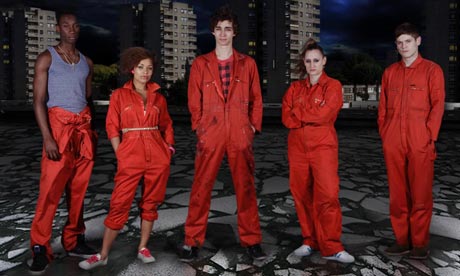
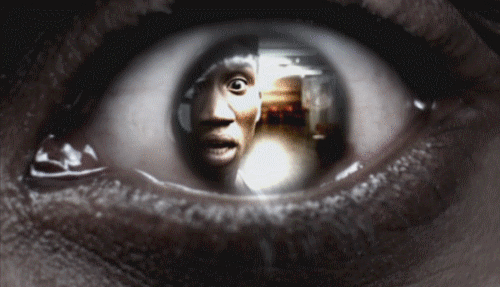

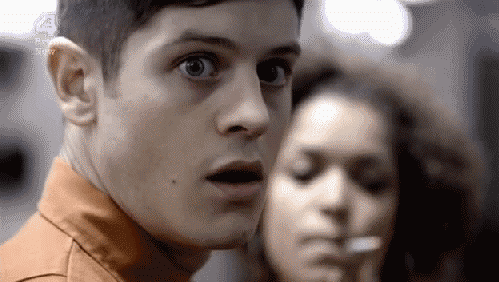

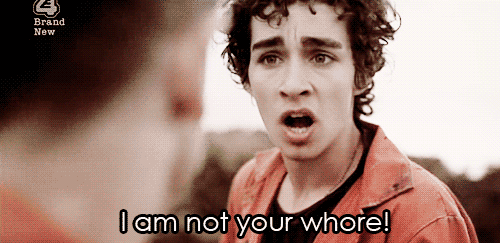
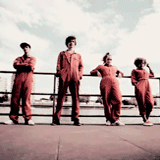
No comments:
Post a Comment